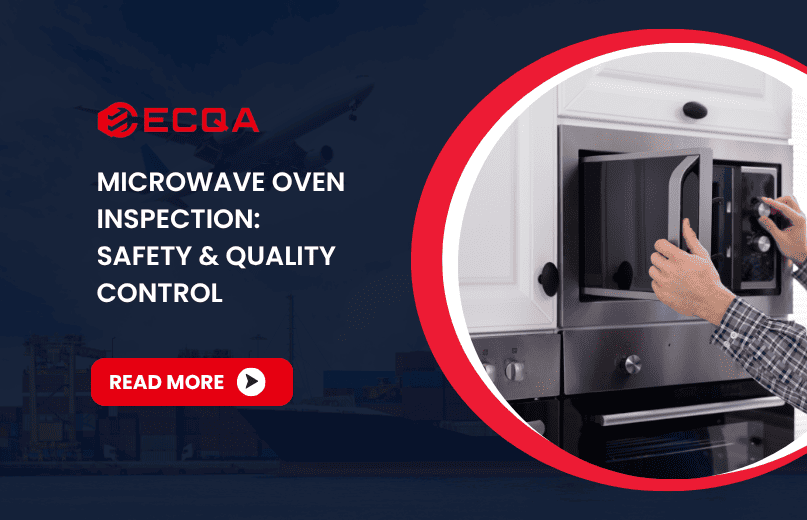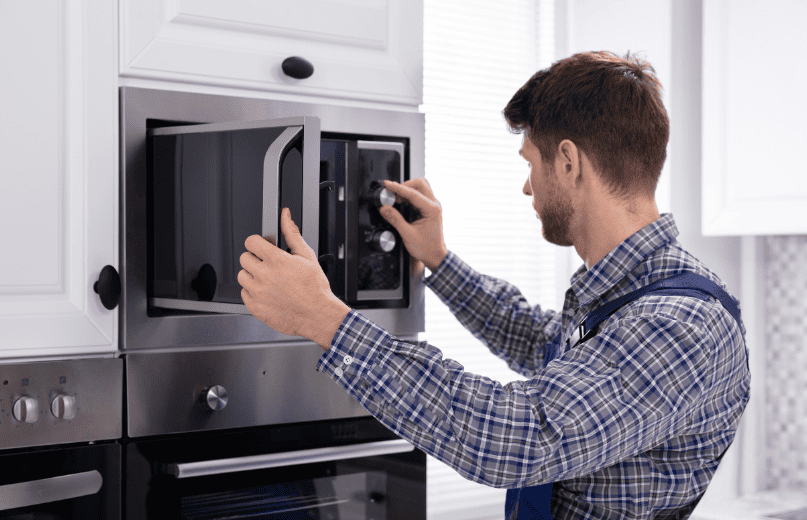
Microwave Oven Inspection: Safety & Quality Control
Microwave oven inspection is a structured quality control process carried out during or after production to ensure each unit meets performance, safety, and regulatory standards. These inspections are critical for both manufacturers and buyers in minimizing product risks, avoiding regulatory non-compliance, and maintaining customer trust.

Microwave ovens involve multiple safety-sensitive components, such as electrical circuits, heating elements, magnetic wave generators, and metallic enclosures. Any oversight in design, assembly, or function can lead to radiation leakage, fire hazards, or product failure.
Global buyers and brand owners typically mandate pre-shipment inspections or in-line quality checks to verify conformity before goods are released for shipping. These inspections verify:
- Functional performance
- Electrical and mechanical safety
- Microwave radiation containment
- Structural durability
- Visual appearance and labeling
Inspections also help detect manufacturing inconsistencies that are difficult to identify through documentation alone. Even a small batch of faulty products can damage brand credibility, trigger costly recalls, or lead to import rejection by customs.
Global Standards and Testing Requirements for Microwaves
Microwave ovens fall under international safety and electrical regulations depending on the target market. The primary global standard is:
IEC 60335 Series
- IEC 60335-1: General safety requirements for household and similar electrical appliances
- IEC 60335-2-25: Specific to microwave ovens
These standards cover:
- Microwave radiation safety
- Electrical insulation and grounding
- Protection against electric shock
- Mechanical durability and resistance to heat and fire
Compliance with IEC standards is often required for CE marking in the EU and for many importers worldwide.
Country-Specific Requirements
- United States: UL 923 certification for microwave ovens; FCC regulations for radiation leakage
- European Union: CE marking under LVD (Low Voltage Directive) and EMC (Electromagnetic Compatibility) requirements
- China: CCC (China Compulsory Certification) and GB4706 standards
- Canada: CSA C22.2 No. 61, plus Health Canada’s microwave emission safety rules
In most markets, authorities require a combination of third-party testing, product certification, and on-site inspection as part of the compliance process. While lab testing verifies technical parameters, field inspections ensure real-world implementation and batch integrity.
Microwave Oven Inspection Checklist
During a standard microwave oven inspection, qualified inspectors perform both visual assessments and functional tests using predefined protocols and industry standards.
Visual and Physical Checks
- Overall appearance: scratches, dents, unclean surfaces
- Labeling: model number, voltage, plug type, safety warnings
- Logo and branding alignment
- Door alignment and hinge integrity
Functional Tests
- Power function: turn-on, cycle, and shut-off operations
- Control panel: digital display, buttons, timer accuracy, presets
- Interior lighting and viewing window transparency
- Turntable function: smooth rotation under load
Radiation Leakage Test
- Conducted using calibrated microwave leakage detectors
- Testing at 5 cm distance from the surface, per IEC 60335
- Acceptable leakage level: less than 5 mW/cm²
Electrical Safety Tests
- Grounding continuity test
- Insulation resistance test between live parts and accessible surfaces
- Check for exposed wires, loose terminals, or non-standard fuses
Heating Performance Test
- Water load heating: measuring temperature rise over 2–3 minutes
- Ensures even distribution and functional magnetron output
- Verification of power rating consistency
Accessories and Packaging
- Verification of accessories (glass tray, grill rack, etc.)
- Instruction manual accuracy and completeness
- Correct power cord length and plug type for target market
- Drop test packaging compliance if required by client
Inspections usually follow AQL sampling standards to determine how many units to inspect from the shipment. Each test point is marked as Pass, Fail, or Critical depending on severity and impact.
Microwave ovens must meet strict international safety and performance benchmarks before they reach the hands of consumers. Whether you’re sourcing directly from factories or managing a private label brand, ignoring inspection is a risk you can’t afford to take.
Partner with ECQA to schedule thorough, standard-compliant microwave oven inspections before your shipment leaves the factory. Our experts apply IEC protocols, test for leakage and electrical hazards, and help you deliver safe, compliant products to market on time and with confidence.

 Request Free Sample Report
Request Free Sample Report